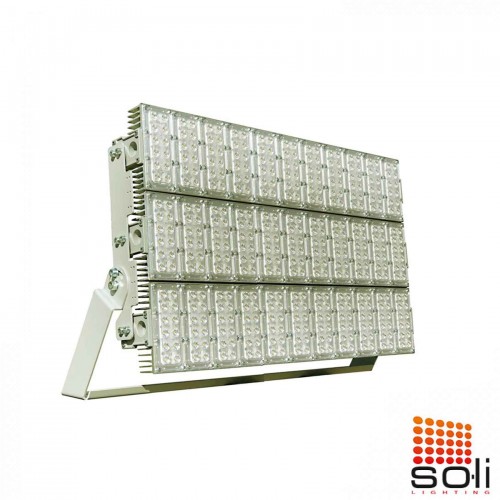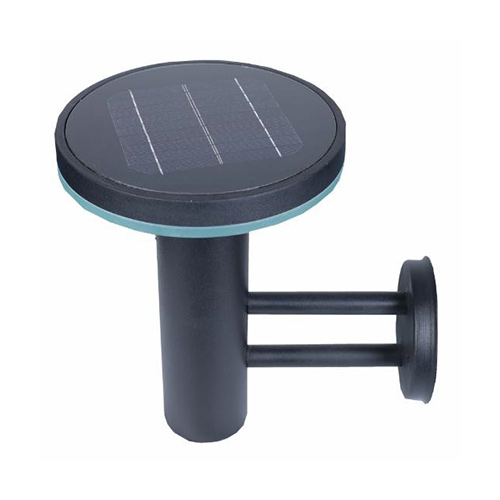Today's LED lights are safe, effective and so energy efficient that they can't even compare to traditional lighting methods. But why do some people have health concerns? We've covered some common complaints about LEDs below.
Myth 1: LED lights are bad for your eyes
Today's LED lights are as safe for your eyes as any other modern light source, and indeed LED lights are used on the skin and in other health therapies because LEDs do not contain ultraviolet rays like other light therapies. LEDs contain blue light that occurs naturally in sunlight. Too much of anything can be bad for you, so of course you can limit the amount of time you spend looking at screens (the main culprit of blue light), but this is good for your health for reasons other than exposure to light.
Myth 2: LEDs contain toxic substances
LEDs from reputable manufacturers do not contain toxic substances that can harm you. In fact, one of the advantages of LEDs over fluorescent lamps like CFLs is that they can be easily recycled with regular electronics. This means that if you're a facility manager, you don't have to worry about extra recycling that could cost money. Fluorescent lamps contain harmful mercury and need to be recycled in specialized facilities (which, in addition to flashing fluorescent lights, especially fluorescent tubes, is actually bad for your eyes, but that's a whole separate issue). As long as you buy your LEDs from a manufacturer that meets the product criteria surrounding industry testing, this is not a cause for concern.
Myth 3: LEDs are not good for sleep
Any bright light won't help you sleep at night, but modern lights have been a part of our homes and workplaces for over 100 years. It is important to practice sleep hygiene by staying away from electronic devices such as your phone close to bedtime, rather than turning off the LEDs.
On the other hand, being illuminated with LEDs during the day can actually be beneficial! As mentioned, the blue light that occurs naturally in sunlight can be good for your mood. If your office complex or factory floor uses LEDs, it is possible that your employees can focus more easily due to the high quality of the lighting. Additionally, LEDs are now available in a wide variety of color temperatures and dimmers so you can adjust your light level accordingly. This applies to residential and commercial LED lighting applications. For example, even municipalities can choose different color temperatures of the LEDs to limit exposure to blue light and light pollution, so your city doesn't have to keep you up all night! Color temperatures can even change on streetlights (and all LEDs) depending on the time of day! So imagine your office complex has higher levels of blue light to keep workers awake in the morning, but lower levels in the afternoon to gradually transition into evening. The possibilities of LEDs are endless.
Myth 4: All LEDs shine very bright white and brilliantly
It's true that at first LED bulbs looked very white, but that hasn't been the case for years anymore. LEDs are now available in many color temperatures, from cool blue to warm, bright yellow. You can easily limit your exposure to this bright white caused by high levels of blue light. Also, bright light means safer areas (like a university campus or city street) which is an often overlooked benefit of LEDs. And as discussed above, your LEDs can be adjusted for the time of day. Let's say you're in charge of lighting a college campus, maybe the LEDs go a little off around 10 pm when most students go to bed. This is just an example.
Finally
As we know, all modern technologies come with risks and it is important that we continue to research and revise these technologies to keep up with the concerns. LEDs are always evolving, and today's LEDs are not the same as the first generation LEDs that are often and perhaps justifiably criticized. The health risks you hear about in connection with LED lighting often refer to these older models or poor quality products. That's why it's absolutely vital that you work with an LED lighting professional so that you have the right color temperature, physical color temperature, kelvin, etc. to control and only apply blue light, which is healthy for you and your customers/community. You get healthy LEDs with high quality, industry tested LEDs. Otherwise, it may result in a harmful LED. As we always say, LEDs are NOT a commodity and they are not all created equal. We will be happy to assist you with your commercial LED lighting project for the best results.
Our ..
₺52,250
Ex Tax:₺52,250
The excite..
₺69,800
Ex Tax:₺69,800
&nbs..
₺42,250
Ex Tax:₺42,250
The excite..
₺24,350
Ex Tax:₺24,350
Our Soli L..
₺18,400
Ex Tax:₺18,400
&nbs..
₺6,450
Ex Tax:₺6,450
Our ..
₺8,700
Ex Tax:₺8,700
The excite..
₺26,600
Ex Tax:₺26,600
LED ..
₺5,250
Ex Tax:₺5,250
Road..
₺6,600
Ex Tax:₺6,600
About LED Flood Lights
- LED Flood Light Buying Guide
- Brain Of Led Flood Lights : LED Flood Light Drivers
- Can A Floodlight Be Used Instead Of Street Lights?
- Are LED Lights Suitable for Hazardous Locations?
- About High Bay and Low Bay Lighting
- 10 Benefits of LED Floodlights for Outdoor Lighting
- Main Factors of Outdoor LED Lighting Design
- Solar Floodlight
- Smart and Human Centered Lighting
- 4 Lighting Design For Post-Covid
- Health Risks That Are Actually Myth About LED Lights
- Things to Avoid When Upgrading Your Lighting Style to LED
- The Future of LED Lighting
- High Power LED Floodlight
- About Amount of Light And Light Quality
- LED Stadium Lighting Information
- Performance of LED Lights in Cold Weather
Usage Areas
- Sports Lighting
- How To Choose Stadium Lighting Company
- Aircraft Hangar Tips
- LED Warehouse Lighting
- Automotive Showroom Lighting
- Safety and Operational Tips for Light Towers
- Advantages and Applications of LED Street Lights
- How LED Street Lights Can Save Citizens Millions of Liras
- Outdoor LED Lighting
- Is LED Industry Evolving?
- LED For Car Parks
- Solar Street Lights
- Use of LEDs in Tunnel Lighting
- LED Lights for Your Garden Inside Your Home
- Solar Street Lights Calculation and Sizing



















